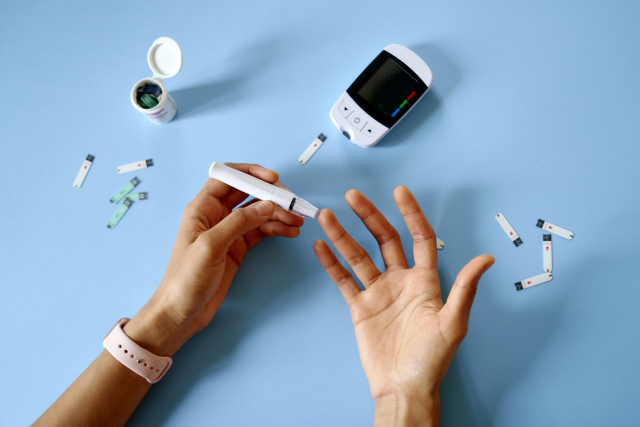1. Glucose Levels Differ Depending on Where You Measure
Our body’s blood glucose levels show slight differences depending on the type of blood and the time of measurement. Blood can be broadly categorized into arterial blood, venous blood, and capillary blood from the fingertip.
2. Differences in Glucose Levels by Blood Type
– During Fasting: In a fasting state, all body tissues use a similar amount of glucose, so there is almost no difference in glucose levels among arterial, venous, and capillary blood.
– After a Meal: After eating, the glucose absorbed from the small intestine is delivered throughout the body via the arteries. This glucose enters the cells of peripheral tissues like the fingertips before returning to the veins. Therefore, after a meal, the glucose level is typically highest in ‘arterial/capillary blood’ followed by ‘venous blood.’ This means that even when measured at the same time, fingertip blood sugar can be slightly higher than venous blood sugar from the arm.
3. The Diagnostic Standard: ‘Venous Plasma Glucose’
Because of these differences, the official diagnostic criteria for diabetes used worldwide (e.g., fasting glucose of 126 mg/dL) are based on the glucose concentration in ‘venous plasma,’ which is obtained by separating red blood cells and other components from blood drawn from a vein in the arm at a hospital.
The readings from a self-monitoring blood glucose meter, which uses capillary blood from the fingertip, measure ‘whole blood’ glucose. Although modern meters are calibrated to be similar to plasma glucose levels, they are intended for ‘monitoring’ purposes, not for diagnosis.
Summary: Blood glucose levels can vary depending on the type of blood measured. The official diagnostic standard for diabetes is the glucose level in ‘venous plasma’ drawn at a hospital, not capillary blood from a fingertip.


Leave a Reply